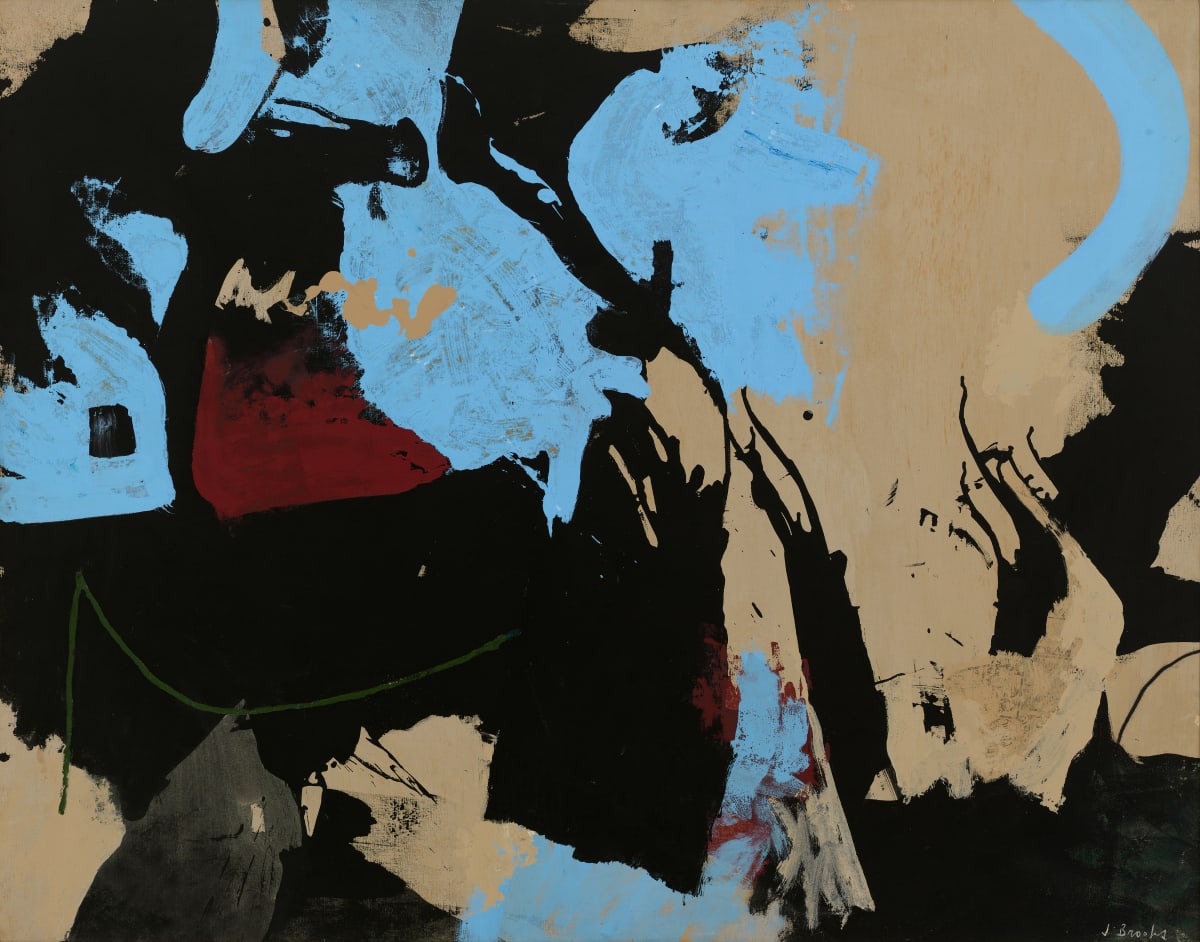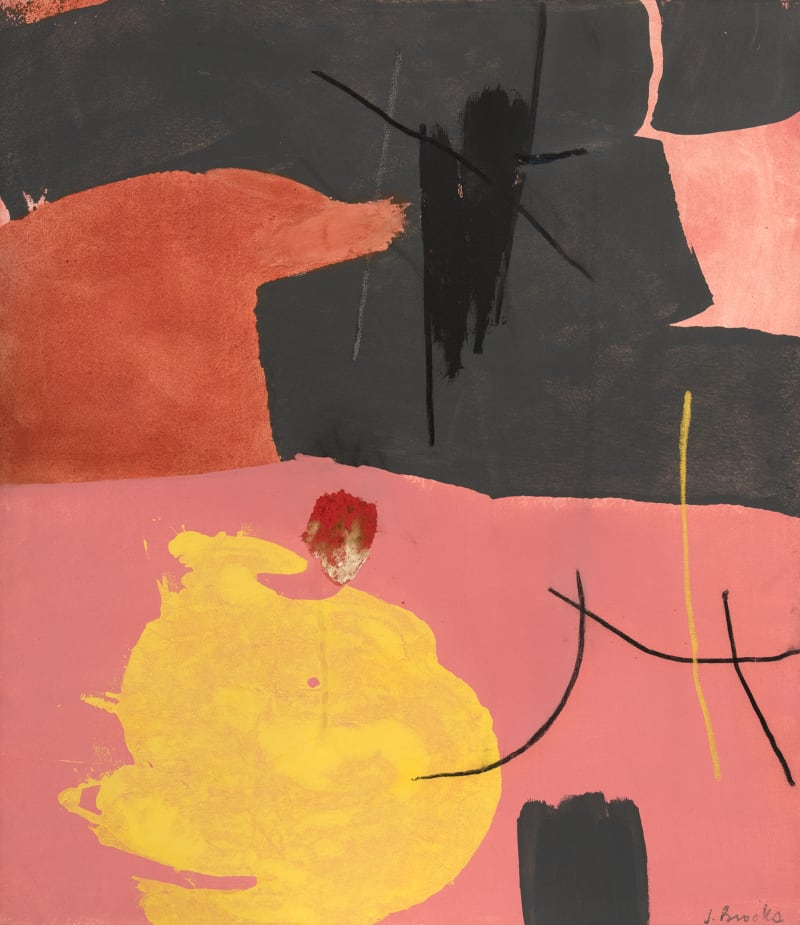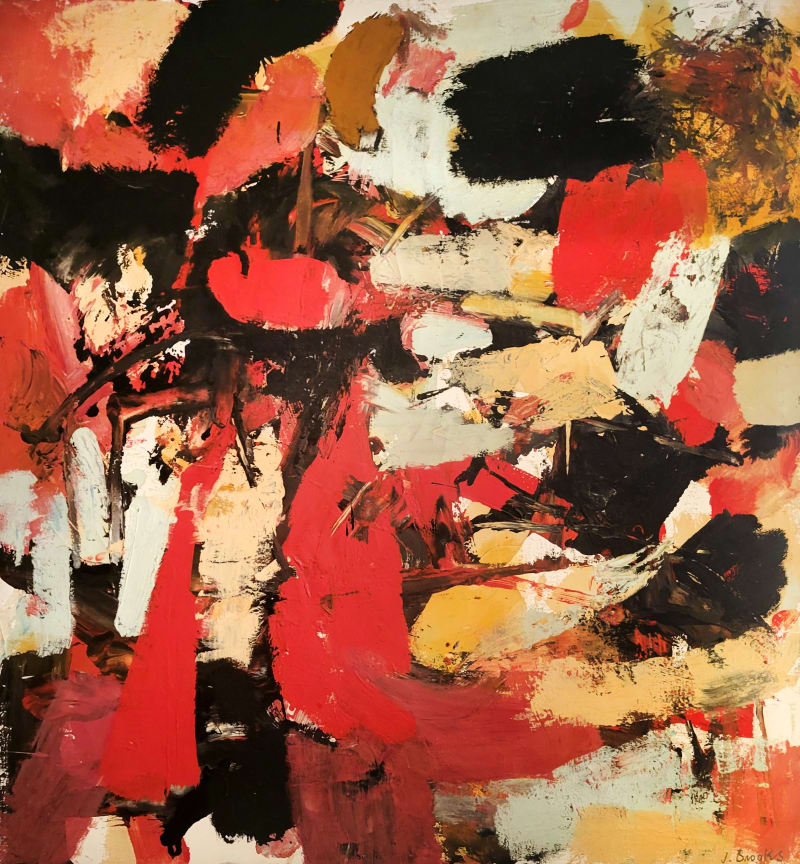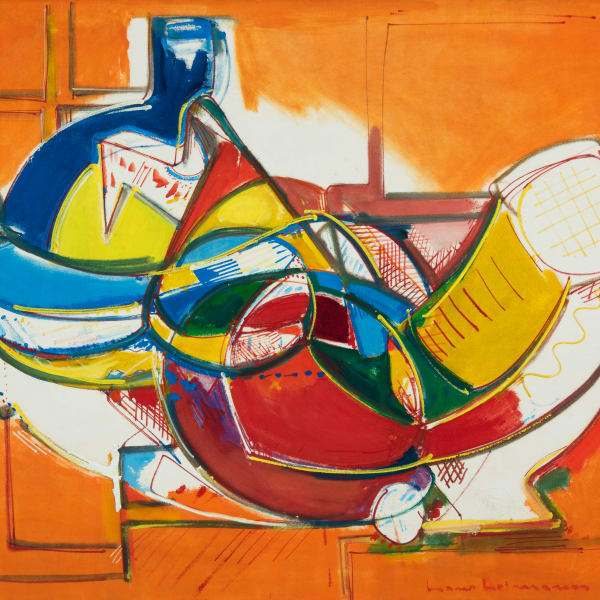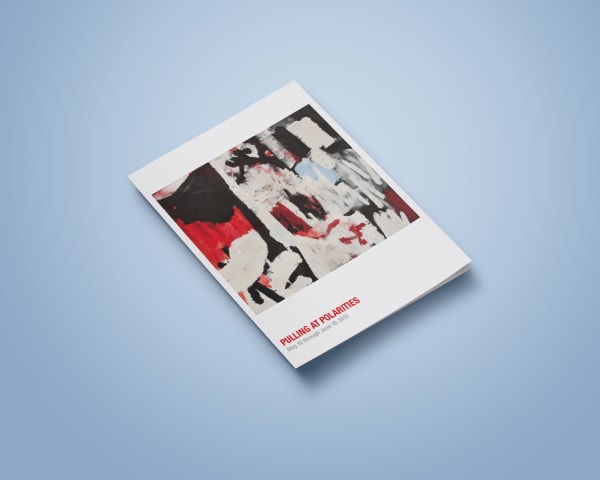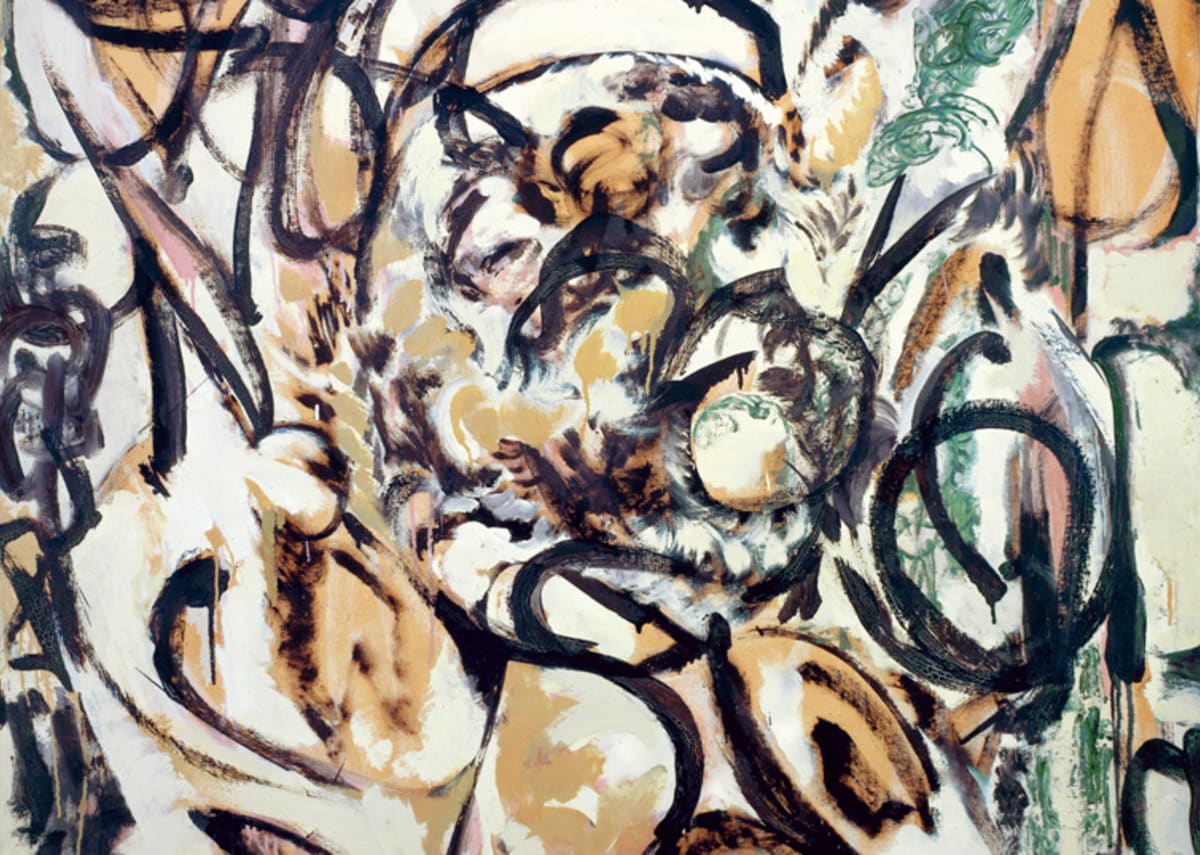
Color remained a consistent and essential ingredient in his pictures.
James Brooks began his career as a Social Realist artist, but later adopted an abstract style and became associated with the so-called New York School and the Abstract Expressionist movement. Born October 18, 1906, in St. Louis, Missouri, Brooks moved around as a child, because his father was a traveling salesman. He lived in Oklahoma City and Shawnee, Oklahoma, and Denver, Colorado, before settling with his family in Dallas, Texas, where he attended high school and began his formal study of art at Southern Methodist University from 1923-1925. After he left college, he continued his artistic training with Martha Simkins, a former student of William Merritt Chase. In 1926, Brooks relocated to New York City, where he enrolled in night classes at The Art Students League, studying with Kimon Nicolaides and Boardman Robinson. He supported himself by working as a commercial letterer. After completing three years of art school, he spent half the year in his job as a letterer in New York and the other six months traveling in the west and southwest, painting pictures in a Social Realist style. At this time, Brooks began to exhibit his prints and paintings in group shows at the Midtown Galleries and at the Whitney Museum of American Art.
James Brooks began his career as a Social Realist artist, but later adopted an abstract style and became associated with the so-called New York School and the Abstract Expressionist movement. Born October 18, 1906, in St. Louis, Missouri, Brooks moved around as a child, because his father was a traveling salesman. He lived in Oklahoma City and Shawnee, Oklahoma, and Denver, Colorado, before settling with his family in Dallas, Texas, where he attended high school and began his formal study of art at Southern Methodist University from 1923-1925. After he left college, he continued his artistic training with Martha Simkins, a former student of William Merritt Chase. In 1926, Brooks relocated to New York City, where he enrolled in night classes at The Art Students League, studying with Kimon Nicolaides and Boardman Robinson. He supported himself by working as a commercial letterer. After completing three years of art school, he spent half the year in his job as a letterer in New York and the other six months traveling in the west and southwest, painting pictures in a Social Realist style. At this time, Brooks began to exhibit his prints and paintings in group shows at the Midtown Galleries and at the Whitney Museum of American Art.
From 1936 to 1942, working for the Works Progress Administration (WPA) Federal Art Project in New York, Brooks executed several murals, including the celebrated Flight, 1942, an episodic history of the effort to fly on the walls of the lobby of the International Marine Terminal Building at La Guardia Airport (now the Delta Air Lines Terminal). During the Second World War, he served in the United States Army as a combat artist in Egypt and in the Near East, creating images of daily army life and of the destruction wrought by the war. After serving abroad from 1942-1945, he was reassigned to the presentation division of the Office of Strategic Services (O.S.S.) in Washington, D.C.
After the war, he returned to New York City to resume painting and reconnected with several old friends from his WPA days, including Jackson Pollock, Philip Guston, and Bradley Walker Tomlin. He began to see a great deal of Lee Krasner and Jackson Pollock and went to live in their old studio on Eighth Street after they moved permanently to the Springs, Long Island. Pollock frequently stayed with Brooks on trips to Manhattan, and Brooks spent his summers in Montauk beginning in 1949. At this time, his work became increasingly abstract, revealing the influence of Synthetic Cubism and the imagery of Arshile Gorky.
While painting in Maine in the summer of 1948, Brooks had an artistic breakthrough. He discovered that the glue paste he used to attach his paper to canvas accidentally bled through to the side with his images. He started to exploit this staining technique, moving beyond the more rigid format of his Cubist-inspired compositions. In addition, he relied more heavily on automatism and free brushwork, creating images that showed the influence of Pollock’s action painting methods.
Beginning in the 1950s, while continuing to construct multi-layered canvases filled with small, irregular shapes and thin, fluid lines, Brooks transformed the surface of his pictures. He experimented with the thinning and drying of the medium and with applying mixtures of commercial enamels and oils directly from the tube to create a matte surface and to limit the viscosity of the pigment. From the 1960s on, Brooks simplified his compositions, abandoning the densely packed character of his earlier works. Color, however, remained a consistent and essential ingredient in his pictures, and he frequently started with colored grounds rather than plain white canvas. As the art historian Lisa Mintz Messinger observes, “It is interesting to note that Brooks’s Long Island home, which he shares with his wife, the artist Charlotte Park, is filled with delightful and unexpected accents of bright color. White walls and white furniture are juxtaposed against painted wooden floors of mustard yellow, green, and blue and painted yellow ceiling beams.” (1)
From 1947 to 1975, Brooks taught as a way to supplement his income. His teaching appointments included instructor in drawing at Columbia University, New York (1946-1948); instructor in lettering at the Pratt Institute, New York (1948-1955); visiting critic at Yale University, New Haven (1955-1960) and the University of Pennsylvania, Philadelphia (1971-1972); and Andrew Carnegie Visiting Professor of Art at Cooper Union, New York (1975). He also was artist in residence at the American Academy in Rome in 1963 and received a Guggenheim Fellowship in 1967.
In 1949, Brooks had his first one-man show at the Peridot Gallery in New York. This exhibition was followed by numerous shows in New York at the Stable Gallery, the Kootz Gallery, and the Martha Jackson Gallery among others. During his lifetime, he had five retrospectives, which traveled to museums throughout the country, including the Whitney Museum of American Art, the Dallas Museum of Fine Arts, and the Portland Museum of Art in Maine. The Albright-Knox Art Gallery, Buffalo; the Art Institute of Chicago; the Brooklyn Museum; the Corcoran Gallery of Art, Washington, D.C.; the Hirshhorn Museum, Smithsonian Institution, Washington, D.C., the Solomon R. Guggenheim Museum, New York; the Museum of Modern Art, New York; the Tate Gallery, London, are among the over fifty museums in which his works can be found.
Having suffered from Alzheimer’s disease since 1985, Brooks died in East Hampton, New York, in 1992.
1) James Brooks, as quoted in Lisa Mintz Messinger, James Brooks: A Quarter-Century of Work (Huntington, New York: The Heckscher Museum, 1988), 11. This passage is from a letter that Brooks wrote in 1958 to explain why he refused to participate in the Whitney Museum of American Art’s Nature in Abstraction exhibition.









